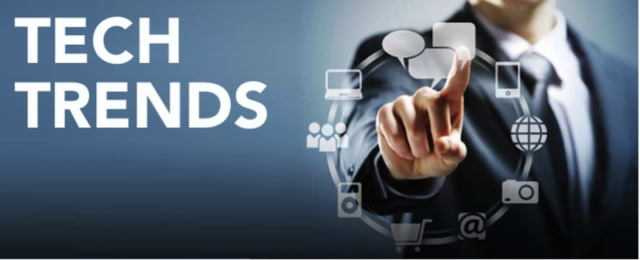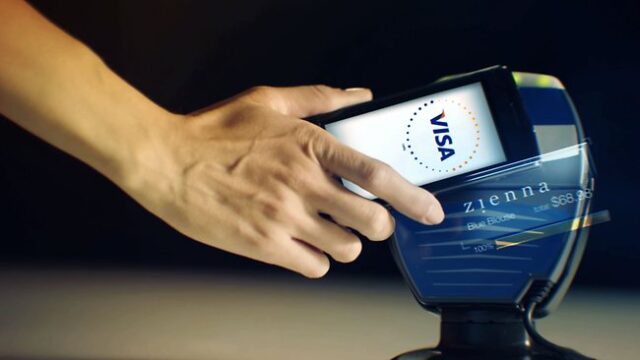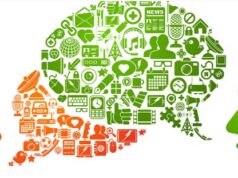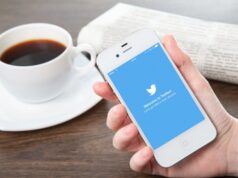
Gartner, Inc. is the world’s leading information technology research and advisory company. They deliver the technology-related insight necessary for clients to make the right decisions, every day. From CIOs and senior IT leaders in corporations and government agencies, to business leaders in high-tech and telecom enterprises and professional services firms, to technology investors, they are the valuable partner to clients in over 9,000 distinct enterprises worldwide. Through the resources of Gartner Research, Gartner Executive Programs, Gartner Consulting and Gartner Events, they work with every client to research, analyze and interpret the business of IT within the context of their individual role. Founded in 1979, Gartner is headquartered in Stamford, Connecticut, USA., and has 6,400 associates, including more than 1,480 research analysts and consultants, and clients in 85 countries.
In 2012 webinar, Gartner points out technology trends that will reshape the way companies operate and connect with consumers. While some already being implemented with the potential to expand, some suggest the back-end changes that could fundamentally shift the business processes.
Gartner highlights tech trends, Mobile Technologies and Capabilities for 2015 and 2016:
- Consumerization and the Tablet – Tablets can be used in many ways by businesses to augment office space and tedious processes. Companies also often receive pressure from the top-down to accommodate for whatever devices consumers are using—Gartner calls this “the cool factor.” To prepare properly for implementing tablet operations, companies need to determine security guidelines and use profiles, build integration timelines and shop around for critical vendor support if needed.
-
The Infinite Data Center – Racks are getting denser, performance per kilowatt is increasing, and smaller data centers are able to handle more. This is the premise Gartner establishes for businesses to work with in the next two years, suggesting that “utilization levels and compute-to-energy ratios are paramount by 2013.” The report also emphasizes “logical growth without physical growth,” as a way of retaining an organization’s footprint. To do this effectively, Gartner suggests analyzing asset use and working with facilities units to consider upgrades, reduce refresh cycle times and increase cores, virtualization while forcing parallel processing.
-
Resource Management – Gartner emphasizes the increased awareness organizations must have surrounding energy usage, compute-to-consumption ratios and KPI consumption. The firm also suggests that energy management will become an enterprise-level discipline by 2017, which will be enabled by energy management information systems.
-
Mobility – A mobile focus requires a change in mindset, which Gartner dubs the “seamless shift between computing and communicating.” The report emphasizes that mobile devices are not PCs, and though security remains a challenge, the variety of devices users demand platforms on makes building portals more difficult, personal clouds and shrinking data centers are making it easier to meet the needs of consumers.
-
Hybrid Clouds – While, through 2013, more than 60 percent of IT adoption of the cloud will be to redeploy current applications, a shift will take place beyond that to exploit private and hybrid cloud techniques. For this, Gartner advises companies to develop only after public services have been integrated with private delivery. The report also emphasizes results, as even at an enterprise-wide level, peer pressure can move projects forward without valid business reason to do so.
-
Fabric Data Centers – Fabric data centers involve the integration of many IT elements that are commonly disaggregated, such as monolithic servers, storage and networks. This enables fast component replacement/substitution and service-driven RTI while optimizing workloads. Gartner projects things will continue to become increasingly integrated, until beyond fabric-based infrastructures, companies will embark on fabric-based computers, which will enjoy pooled and globally shared resources as well as any-to-any virtual connectivity.
-
IT Complexity – Pointing to Glass’ Law (sourced to Roger Sessions of ObjectWatch), which states that “for every 25 percent increase in functionality of a system, there is a 100 percent incrase in the complexity of that system,” Gartner emphasizes the ability of an enterprise to get the most out of IT money spent.
-
Big Data, Big Problems – Organizations have struggled dealing with big data on both fronts: IT needs to manage it effectively and the business side needs to know how to use it. This tends to leave big data static. However, big data is a problem that only gets worse the longer you ignore it. Gartner asserts that companies should virtualize storage and deduplication, evaluate all data inputs to get rid of what isn’t necessary, and then segment and prioritize what’s left.
-
The End of Service Desks – As users expect service in real time and crowdsourcing support is becoming more prevalent, the effectiveness of reactive processes of service desks is dwindling. Gartner suggests companies build transition strategies that enable a proactive business productivity team.
-
Virtual- and Software-Defined Networks – Virtualization means delivering on many of IT’s promises: more automation, separating hardware from software, increased agility, simplified design, policy-based management, network management bonded to broader IT workflow systems, etc. This will bring a lot of change in terms of processes and interaction, between humans, systems and one another.
- Multiplatform/Multiarchitecture Application Development Tools – Most organizations will need application development tools to support a “3 x 3” future — three key platforms (Android, iOS and Windows) and three application architectures (native, hybrid and mobile Web). Tool selection will be a complex balancing act, trading off many technical and nontechnical issues (such as productivity versus vendor stability), and most large organizations will need a portfolio of several tools to deliver to the architectures and platforms they require.
- HTML5 – it won’t be a simple panacea for mobile application portability because it’s fragmented and immature and therefore poses many implementation and security risks. However, as HTML5 and its development tools mature, the popularity of the mobile Web and hybrid applications will increase. Hence, despite many challenges, HTML5 will be an essential technology for organizations delivering applications across multiple platforms.
- Advanced Mobile User Experience Design – Leading mobile apps are delivering exceptional user experiences, which are achieved by a variety of new techniques and methodologies, such as motivational design, “quiet” design and “playful” interfaces. Designers are also creating apps that can accommodate mobile challenges, such as partial user attention and interruption, or that can exploit technologies with novel features or “wow” factors, such as augmented reality. Leading consumer apps are setting high standards for user interface design, and all organizations must master new skills and work with new partners to meet growing user expectations.
- High-Precision Location Sensing – Knowing an individual’s location to within a few meters is a key enabler of the delivery of highly relevant contextual information and services. Apps exploiting precise indoor location currently use technologies such as Wi-Fi, imaging, ultrasonic beacons and geomagnetics. In 2014, Gartner expects growth in the use of wireless beacons using the new Bluetooth Smart standard. In the longer term, technologies such as smart lighting will also become important. Precise indoor location sensing, combined with mobile apps, will enable a new generation of extremely personalized services and information.
- Wearable Devices – The smartphone will become the hub of a personal-area network consisting of wearable gadgets such as on-body healthcare sensors, smart jewelry, smart watches, display devices (like Google Glass) and a variety of sensors embedded in clothes and shoes. These gadgets will communicate with mobile apps to deliver information in new ways and enable a wide range of products and services in areas such as sport, fitness, fashion, hobbies and healthcare.
- New Wi-Fi Standards – Emerging Wi-Fi standards such as 802.11ac (Waves 1 and 2), 11ad, 11aq and 11ah will increase Wi-Fi performance, make Wi-Fi more relevant to applications such as telemetry, and enable Wi-Fi to provide new services. Over the next three years, demands on Wi-Fi infrastructure will increase as more Wi-Fi-enabled devices appear in organizations, as cellular offloading becomes more popular, and as applications such as location sensing demand denser access-point placement. The opportunities enabled by new standards and the performance required by new applications will require many organizations to revise or replace their Wi-Fi infrastructure.
- Enterprise Mobile Management – “Enterprise mobile management” or “EMM” is a term that describes the future evolution and convergence of several mobile management, security and support technologies. These include mobile device management, mobile application management, application wrapping and containerization, and some elements of enterprise file synchronization and sharing. Such tools will mature, grow in scope and eventually address a wide range of mobile management needs across all popular OSs on smartphones, tablets and PCs.
- Mobile-Connected Smart Objects – By 2024, the average affluent household in a mature market will contain several hundred smart objects, including LED light bulbs, toys, domestic appliances, sports equipment, medical devices and controllable power sockets, to name but a few. These domestic smart objects will be a part of the Internet of Things, and most will be able to communicate in some way with an app on a smartphone or tablet. Smartphones and tablets will perform many functions, including acting as remote controls, displaying and analyzing information, interfacing with social networks to monitor “things” that can tweet or post, paying for subscription services, ordering replacement consumables and updating object firmware.
- LTE and LTE-A – Long Term Evolution (LTE) and its successor LTE Advanced (LTE-A) are cellular technologies that improve spectral efficiency and will push cellular networks to theoretical peak downlink speeds of up to 1 Gbps, while reducing latency. All mobile users will benefit from improved bandwidth, and superior performance combined with new features such as LTE Broadcast will enable network operators to offer new services.
- Metrics and Monitoring Tools – The diversity of mobile devices makes comprehensive app testing impossible, and the nondeterministic nature of mobile networks and the cloud services that support them can result in performance bottlenecks that are hard to locate. Mobile metrics and monitoring tools, often known as application performance monitoring (APM), can help. APM provides visibility into app behavior, delivers statistics about which devices and OSs are adopted, and monitors user behavior to determine which app features are being successfully exploited.
From 2015 smartphones could replace wallets
Paying bills with smartphone has become everyday life – particularly in developing countries. Market strategists for years have high hopes of paying bills by smartphone. And that market is growing rapidly: in 2010 was paid bills valued at nearly $ 50 billion, 2011 more than 100 billion. American market research company Gartner predict this year’s increase in turnover to $ 170 billion.
Of the various mobile payment options currently offered on the market is the most widely used payment by SMS message. The largest sums are so driven in Africa, the Middle East and Asia, where smartphones are quite widespread, and branches of banks rare. Particularly well-paying SMS works in Kenya and the Philippines. In North America and Europe, things are worse because a pay via phone is one of many possibilities. Neither various bank cards and payment via the Internet failed to displace cash. However, Volker Briegleb from computer magazine c’t is convinced that the development goes to paying via a smartphone.
“Mobile Wallet” – it seems that was found appropriate technology that can convince the last skeptics: it is called “Near Field Communication”, abbreviated NFC. Once you are on the other side of the Atlantic, first Google, then Microsoft started to introduce this type of payment, German Telekom in collaboration with Mastercard credit concern wants to bring a shift in Germany and Europe. NFC works easier than SMS. The mobile phone contains all the user’s bank account and credit card numbers. This concept is called “mobile wallet”. At the cash desk in store etc., the user type in safety pin, choose the account from which the money should go, close mobile to reader – and that’s it. Amounts less than 25 euros are immediately removed from the account and for a larger amount is required to key in another security number.
Data theft, buying from someone else’s phone, or any other possibility of fraud is excluded. “This technology, according to current knowledge, is sure as the payment card with a chip.” And if the phone is lost? All it takes is a phone call technical support and all accounts will be blocked simultaneously. These arguments with practical experience of trial payments should reassure potential customers.
The introduction of these technologies is slow because each waiting for the other. Stores do not want to include as there are not enough users of this technology. The American market research company Gartner calculated that only 2015 this technology will massively used in the world. This requires a boost. Considering that only a small number of mobile phones can receive a card for NFC technology.
Source: Gartner














